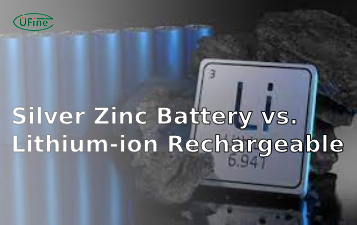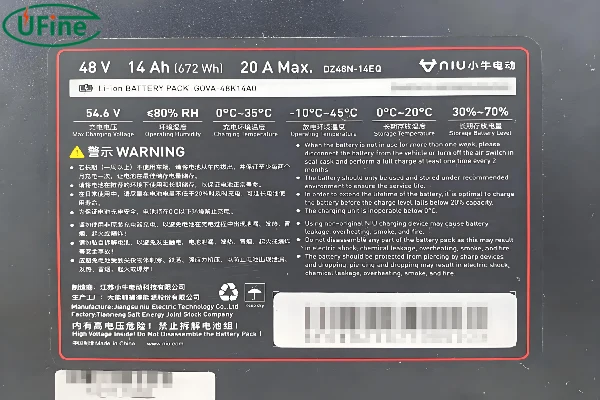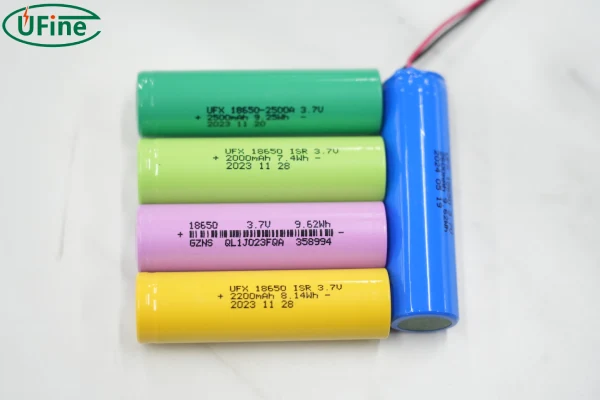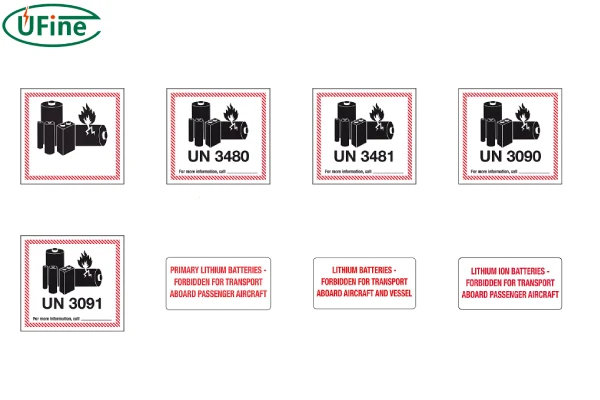
If you’ve ever looked at a lithium battery label and felt a bit overwhelmed, you’re not alone. These labels are packed with information that can seem confusing at first. But don’t worry! By the end of this article, you’ll be a pro at understanding what all those symbols and numbers mean. Let’s dive in and decode the mystery of lithium battery labels together.
Part 1. What is on the lithium battery label?
Lithium battery labels are like treasure maps. They provide a wealth of information that’s crucial for identifying the battery, ensuring safety, and complying with various regulations. Here’s a breakdown of what you’ll typically find on these labels:
- Product Information: Basic details about the battery.
- Safety Signs: Important symbols that indicate safety precautions.
- Certification Marks: Proof that the battery meets specific standards.
- Transportation Labels: Instructions for safe shipping and handling.
Each of these components plays a vital role in making sure the battery is used safely and appropriately. Let’s explore each of these in more detail.
Part 2. Product information
Product information is probably the most straightforward part of a lithium battery label, but it’s also incredibly important. This section includes several key details:
- Voltage: This indicates the electrical potential difference of the battery. You might see something like 3.7V or 7.4V. This information is crucial because it tells you how powerful the battery is. Using a battery with the wrong voltage can damage your device or even cause safety issues.
- Capacity: Measured in milliampere-hours (mAh), this tells you how much energy the battery can store. For instance, a battery with 3000mAh capacity can provide 3000 milliamps of current for one hour. Higher capacity means longer battery life.
- Model: The specific model number is like the battery’s ID card. It helps in identifying the exact type of battery you’re dealing with, which is useful for replacements and ensuring compatibility with your devices.
- Production Date: This tells you when the battery was manufactured. Knowing the production date is important because batteries can degrade over time, even if they haven’t been used.
- Size: The physical dimensions of the battery are important to ensure it fits your device properly. This includes length, width, and height.
- Weight: The weight of the battery is crucial not only for usage but also for shipping. Some shipping regulations are based on the weight of the battery.
- Production Batch: This is a batch number for tracking purposes. If there’s ever a recall or issue with a particular batch of batteries, this number helps manufacturers and consumers track down affected units.
These details help users and manufacturers keep track of battery specifications, ensure compatibility with devices, and manage inventory effectively.
Part 3. Safety information
Safety signs on lithium battery labels are critical. They warn users about potential hazards and provide instructions for safe handling. Here are some common safety signs you might see:
- Flammable Material: This symbol looks like a flame and indicates that the battery can catch fire if mishandled. Lithium batteries are sensitive to heat and physical damage, so this warning is very important.
- Do Not Short Circuit: This warning, often depicted with a crossed-out battery and a spark, tells you not to connect the battery terminals directly. Short-circuiting can cause the battery to overheat, potentially leading to a fire or explosion.
- Do Not Disassemble: This symbol usually shows a battery being taken apart with a line through it. It reminds users that opening the battery is dangerous. Inside a lithium battery are chemicals that can be harmful if exposed.
- Recycle: This symbol looks like three chasing arrows forming a triangle. It indicates that the battery should be recycled properly. Lithium batteries contain materials that can be harmful to the environment if not disposed of correctly.
Understanding these symbols is crucial for the safe use and handling of lithium batteries. They help prevent accidents and ensure that the battery is used correctly.
Part 4. Certification information
Lithium battery certification labels on lithium batteries show that they meet specific standards. These certifications are essential for quality and safety assurance. Let’s look at some common certification marks you might find on a lithium battery:
- CE Mark: This mark indicates conformity with health, safety, and environmental protection standards for products sold within the European Economic Area (EEA). Seeing this mark means the battery complies with EU regulations.
- UL Mark: This stands for Underwriters Laboratories, a global safety certification company. A UL mark means the battery has been tested and meets safety standards set by UL. It’s a sign of reliability and safety.
- RoHS: This stands for Restriction of Hazardous Substances. It indicates that the battery complies with regulations limiting hazardous materials like lead, mercury, and cadmium. This is important for both user safety and environmental protection.
- UN38.3: This certification is required for lithium batteries to be transported by air. It ensures the battery can withstand various tests simulating transport conditions, like altitude simulation, thermal tests, vibration, and shock.
These certifications provide assurance that the battery is safe and reliable. They are often required by law to ensure the battery can be legally sold and transported.
Part 5. Shipping information
Shipping lithium batteries involves specific labels to ensure safety. These labels provide crucial information to handlers and transporters. Let’s explore some common shipping labels:
- UN Number: This is a four-digit number that identifies hazardous substances. For lithium batteries, it’s usually UN3480 (for standalone lithium batteries) or UN3481 (for batteries contained in equipment). This number is essential for identifying the type of hazardous material during transport.
- Handling Labels: These labels indicate special handling instructions. For example, you might see “Handle with Care” or “Do Not Load on Passenger Aircraft.” Such instructions are vital to prevent accidents during transport.
- Packaging Labels: These labels show how the battery should be packaged. This can include symbols indicating that the package contains lithium batteries and should be handled accordingly. Proper packaging is crucial to prevent damage and ensure safe transport.
These labels are essential for safe transportation. They help prevent accidents and ensure that the batteries reach their destination safely.
Part 6. Lithium battery labeling requirements
Labeling requirements for lithium batteries are quite strict. They ensure safety and compliance with regulations. Here are some key requirements:
- Clear and Legible: Labels must be easy to read. If you can’t read the label, it’s useless. So, clarity is crucial.
- Durable: Labels should withstand handling and environmental conditions. They shouldn’t wear off easily.
- Accurate Information: All details must be correct and up-to-date. Incorrect information can lead to misuse and safety hazards.
- Compliance with Standards: Labels must meet local and international standards. This includes everything from safety symbols to certification marks.
These requirements help maintain safety and compliance. They ensure that anyone handling the battery has the necessary information.
Part 7. Do all lithium battery labels have the same composition?
Not all lithium battery labels are the same. The composition can vary based on several factors:
- Type of Battery: Different types of lithium batteries (e.g., lithium-ion, lithium-polymer) may have different labeling requirements. For example, lithium-polymer batteries might need additional safety warnings due to their specific properties.
- Intended Use: Batteries for consumer electronics might have different labels than those for industrial use. For instance, a battery used in a smartphone might have more detailed user instructions compared to a battery used in a power tool.
- Regulatory Requirements: Labels might vary based on local regulations. For instance, batteries sold in Europe may have different labels than those sold in the U.S. due to different regulatory standards.
- Manufacturer: Different manufacturers might use different formats and designs. While the core information remains similar, the presentation and additional details can vary.
While the core information remains similar, the presentation and additional details can vary. It’s important to read each label carefully to understand the specific battery you’re dealing with.
In conclusion, understanding lithium battery labels is crucial for anyone who uses, manufactures, or transports these batteries. They provide essential information about the product, safety, certifications, and transportation. By knowing what to look for, you can ensure safe usage and compliance with regulations. Whether you’re a consumer, manufacturer, or transporter, this knowledge is invaluable. So, next time you encounter a lithium battery label, you’ll know exactly what it means and why it’s important.
Related Tags:
More Articles

What is the Difference Between Silver Zinc Battery vs. Lithium-ion Rechargeable?
Compare silver zinc and lithium-ion rechargeable batteries: energy density, cycle life, safety, cost, and uses in drones, medical devices, EVs, and electronics.
What are Watts and Watt Hours in Battery?
Understand watt vs watt-hour in batteries: key differences, how to calculate capacity, and why they matter. Includes free comparison table.
Best 10 Blood Pressure Monitor Battery Review: Finding the Most Reliable
Are you looking for a reliable Blood Pressure Monitor battery? Here is a complete guide with the top 10 best blood pressure monitor batteries.
Bluetooth Headphone Battery Guide: All You Need to Know
Maximize headphone battery life with expert tips! Learn how to charge, check, troubleshoot, and choose the best bluetooth headphone battery in 2025.
LiFePO4 Battery VS. Lithium-ion Polymer Battery: Which One Is Best?
Comprehensive comparison of LiFePO4 vs Lithium Ion Polymer batteries: energy density, safety, lifespan, cost. Find out which battery suits your needs in 2025.





